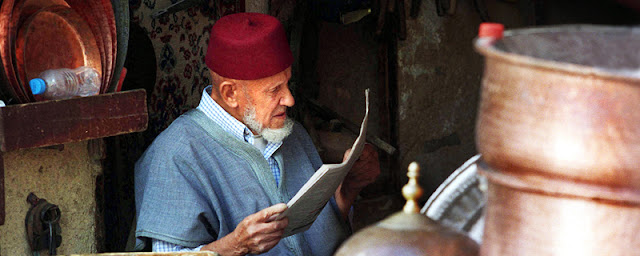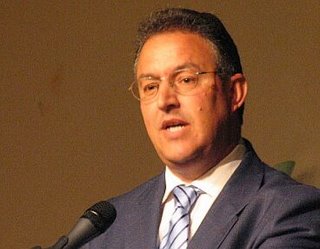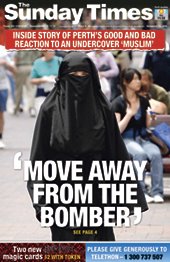France is experiencing a worldwide backlash against its shameful moves to ban the burkini - the Australian designed bathing costume for Muslim women
Nice, Cannes, and several other French cities have recently enacted bans against the burkini, with supporters arguing that the swimwear is not "respectful of good morals and of secularism," and that it poses risks to hygiene and security. Socialist Prime Minister Manuel Valls has said that the burkini represents the "enslavement of women," while former President Nicolas Sarkozy, who announced his 2017 presidential campaign this week, described it as a "provocation" that supports radical Islam.
The argument for the ban rests, ostensibly, on the French principle of
laïcité, which aims to keep religion out of the public sphere, and on the basis of gender equality. But critics say the burkini bans only serve to further stigmatise France's Muslim population — the largest in Europe — at a time when tensions are running high following terror attacks in Nice and the northern city of Rouen this summer. The French feminist group
Osez le Féminisme! excoriated the bans in a statement released this week, saying they serve only to humiliate Muslim women "on the grounds of sexism and racism".
On Thursday, the council of state, France’s highest administrative court, will examine a request by the French Human Rights League to scrap the burkini bans. Lawyers argue that the short-term decrees are illegal.
 |
| A French politician has threatened lawsuits for showing these photos |
Meanwhile, a French politician has threatened to file a lawsuit against anyone who shares photos or videos of police enforcing a ban on the burkini. The statement comes after the widespread circulation of photos showing the Muslim woman removing her clothes in front of four male police officers on a beach in Nice. The French spin doctors are hard at work trying to lessen the damage and now the Nice mayor’s office has even attempted to deny that the woman had been forced to remove clothing, telling
Agence France-Presse that the woman was showing police the swimsuit she was wearing under her tunic over a pair of leggings
Christian Estrosi, president of the Regional Council of Provence-Alpes-Côte d'Azur and deputy mayor of Nice, said in a statement Wednesday that the photos "provoke defamatory remarks and threats" against police agents. He added that legal complaints have already been filed "to prosecute those who spread the photographs of our municipal police officers and those uttering threats against them on social networks."
News media around the world have widely condemned the French ban and even non-Muslim women have been buying burkinis to wear in solidarity with the French women.
 |
| Burkini to the rescue - an Australian lifesaver |
The British newspaper,
The Guardian comments: The French republic is built on a strict separation of church and state, intended to foster equality for all private beliefs. In theory, the state is neutral in terms of religion and allows everyone the freedom to practise their faith as long as there is no threat to public order.
Benoît Hamon, a former education minister running to be the Socialists’ presidential candidate in the 2017 election, said a woman being stopped by police for wearing a headscarf on a beach made a mockery of French secularism and warned against “an obsessive oneupmanship against Muslims” by politicians.
The Green party senator Esther Benbassa tweeted: “Women in headscarves stopped by police on the beach. Secularism? No. Harassment. Anti-religious persecution.”
The French group Osez le féminisme said: “We condemn these anti-burkini decrees. Where are women’s rights when we hold one category of women responsible for ‘public disorder’, or even for terrorism? What is the link between a woman in a headscarf on a beach and mass murders carried out by jihadis?”
The garment’s Australian creator Aheda Zanetti, reports that her sales have gone through the roof since Nice joined Cannes and a number of other water-side locations in not allowing women to wear the conservative design.
“Online sales in the last week have probably had a 200 per cent jump, maybe even 300 per cent,” she explains.
 |
| Aheda Zanetti - "I created the burqini for freedom, not to take it away" |
While Ms Zanetti’s business has been buoyed by the recent controversy, she says that as a woman and a mother, she’s deeply hurt by the ban.
"I don’t understand why people think they have the right to [tell women what they can and can't wear]", Ms Zanetti says. She's also disappointed that her design has been politicised and associated with a certain religion.
“You can’t judge a wearer, she could be anyone and she is anyone," she states, “This has always been a swimsuit for everyone, it was designed to integrate among the West. It does not symbolise a Muslim woman, it should not symbolise a Muslim woman because the veil was taken away."
"The veil is usually a symbol of a typical Muslim woman and we took that away and replaced it with a hood to integrate within our Western friends and neighbours. No one needs to judge us on what faith we are if we choose to be modest while enjoying our leisure time."
At the same time France is being put to further shame by the actions of several other more tolerant societies. In Canada, the Prime Minister, Justin Trudeau, called for "the respect of individual rights and choices" and ruled out a burkini ban. Also the Royal Canadian Mounted Police known simply as "the Mounties", have adopted a new uniform policy to allow female Muslim officers to wear the hijab.
Scott Bardsley, spokesman for Public Safety Minister Ralph Goodale, confirmed that RCMP Commissioner Bob Paulson recently approved an addition to the uniform policy to allow women officers to wear the head scarf "if they so choose."
"The Royal Canadian Mounted Police is a progressive and inclusive police service that values and respects persons of all cultural and religious backgrounds," Bardsley said.
Bardsley said the RCMP will be the third Canadian police force to adopt the hijab policy, behind Toronto and Edmonton police services. Police services across the U.K., Sweden and Norway, and some in U.S. states, have also adopted similar policies.
The National Council of Canadian Muslims applauded the policy change, calling it a "welcome one and a natural evolution for Canadian policing." The advocacy group said three types of headscarves were tested to select one that would not encumber officers and could be easily removed when required.
"While in 1990 there was initial reluctance to allow Sikh RCMP officers to wear the turban as part of their uniforms, Canadians have since embraced the change and we expect that this will be the same with the decision to allow the hijab, said the council's communications director Amira Elghawaby in a release.
"The Canadian Muslim population is growing and this decision will help reflect the richness and diversity of our country as well as open up career options for minorities."
The military has longstanding policies "to protect and promote the religious or spiritual rights and freedoms of [Canadian Armed Forces] members," including accommodating religious and spiritual requirements "if militarily practicable."
 |
| Lt.-Cmdr. Wafa Dabbagh became the first CAF member to wear the hijab in 1996 |
Lt. Commander Wafa Dabbagh became the first female member of the Canadian Armed Forces to wear the hijab in 1996.
According to the military's dress instructions manual dated 2001, members can wear the hijab with certain conditions.
"For spiritual and religious reasons, members are authorised to wear the hijab, provided that any danger should be avoided when they carry some types of operational gear parts such as gas mask, oxygen mask, combat/vehicle/flying/ construction helmets, diver's mask, etc.," the policy reads.
"In case of real danger, these members shall modify their hairstyling or hijab, or both, in a way that will allow them to wear the requested gear."
 |
| British police have allowed hijab for the last ten years |
And on the other side of the Atlantic, Police Scotland have approved the hijab as official uniform to boost number of Muslim women joining force.
In a statement, chief constable Phil Gormley said: “I am delighted to make this announcement and welcome the support from both the Muslim community, and the wider community, as well as police officers and staff.
“Like many other employers, especially in the public sector, we are working towards ensuring our service is representative of the communities we serve. I hope that this addition to our uniform options will contribute to making our staff mix more diverse and adds to the life skills, experiences and personal qualities that our officers and staff bring to policing the communities of Scotland.”
The announcement was welcomed by the Scottish Police Muslim Association (SPMA), a group that aims to build links between Muslim communities in Scotland and the police.
Fahad Bashir, chair of the SPMA said: “This is a positive step in the right direction, and I am delighted that Police Scotland is taking productive steps in order to ensure that our organisation is seen to be inclusive and represents the diverse communities that we serve across Scotland.
“No doubt this will encourage more women from Muslim and minority ethnic backgrounds to join Police Scotland.”
Back in France Interior Minister Bernard Cazeneuve has warned against stigmatising Muslims. Speaking after a meeting with the head of the French Council of the Muslim Faith (CFCM), Cazeneuve said: "The implementation of secularism, and the option of adopting such decrees must not lead to stigmatisation or the creation of hostility between French people."
In the end, France’s burkini ban exposes the hypocrisy of its secularist state and the ban on the burkini will do nothing but further increase tensions and fuel extremism. It brings nothing but shame to the country of France.
SHARE THIS!
































